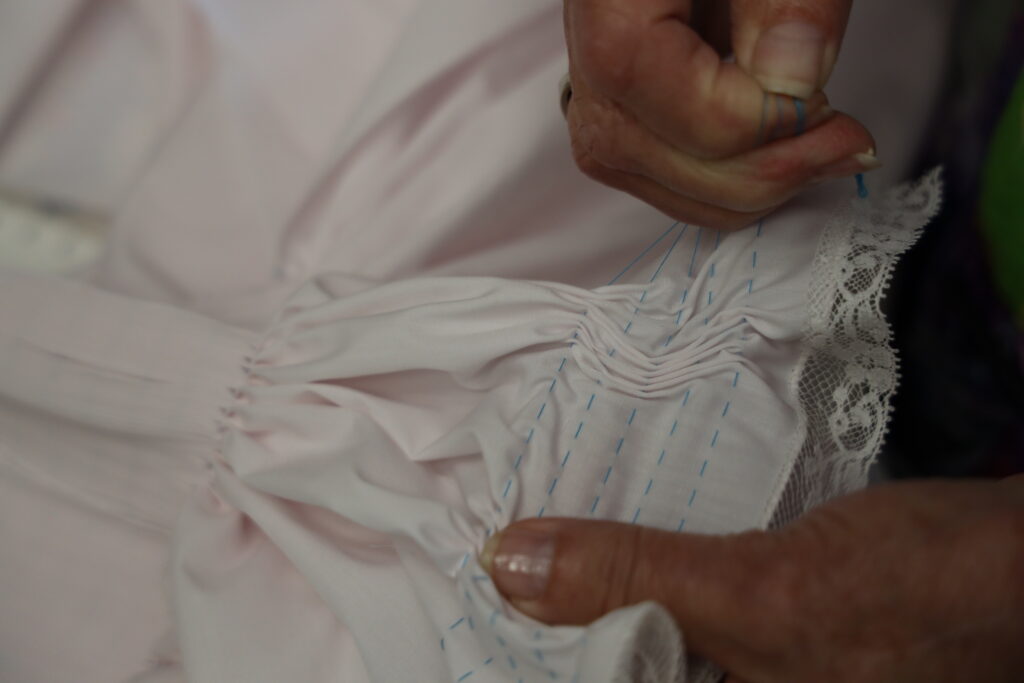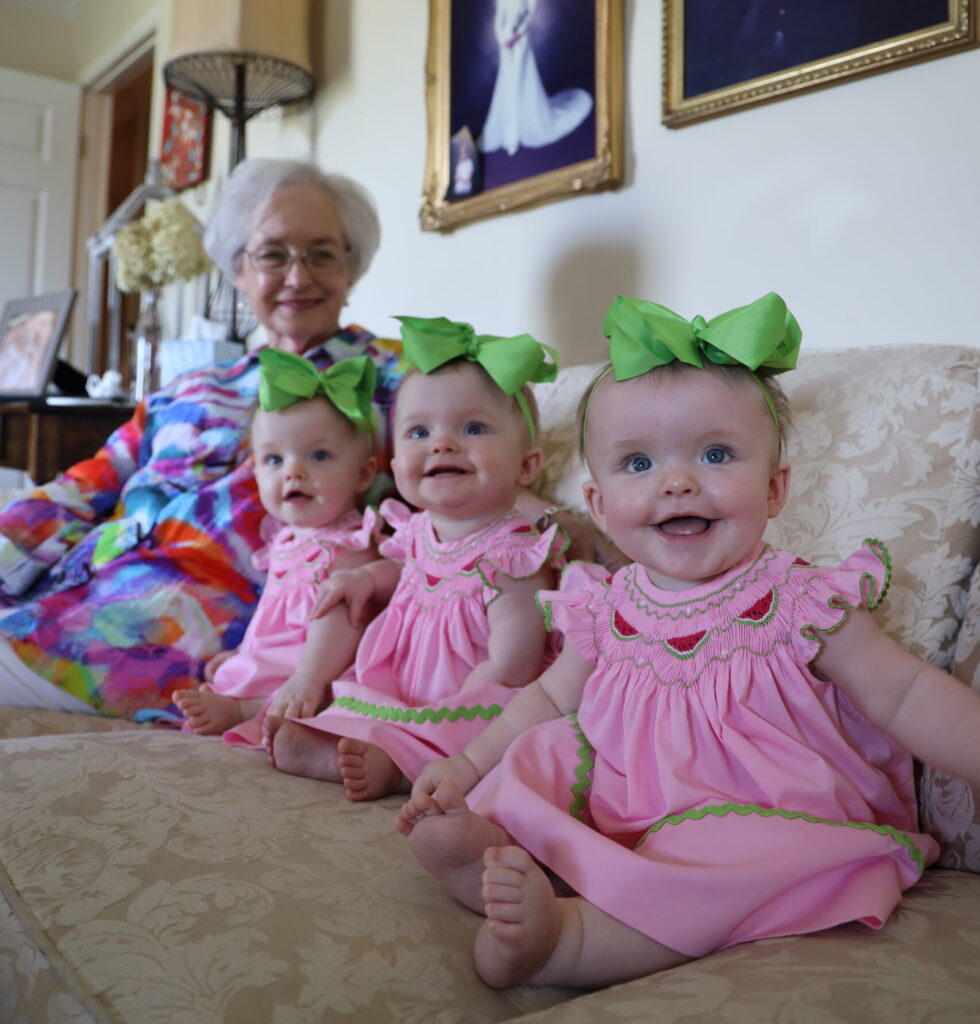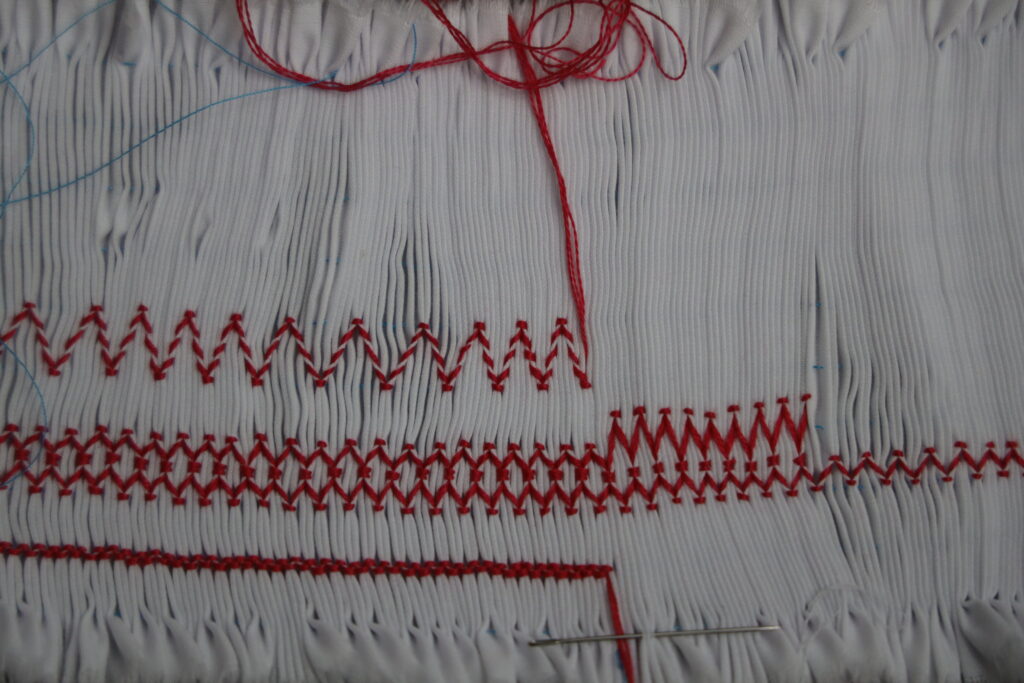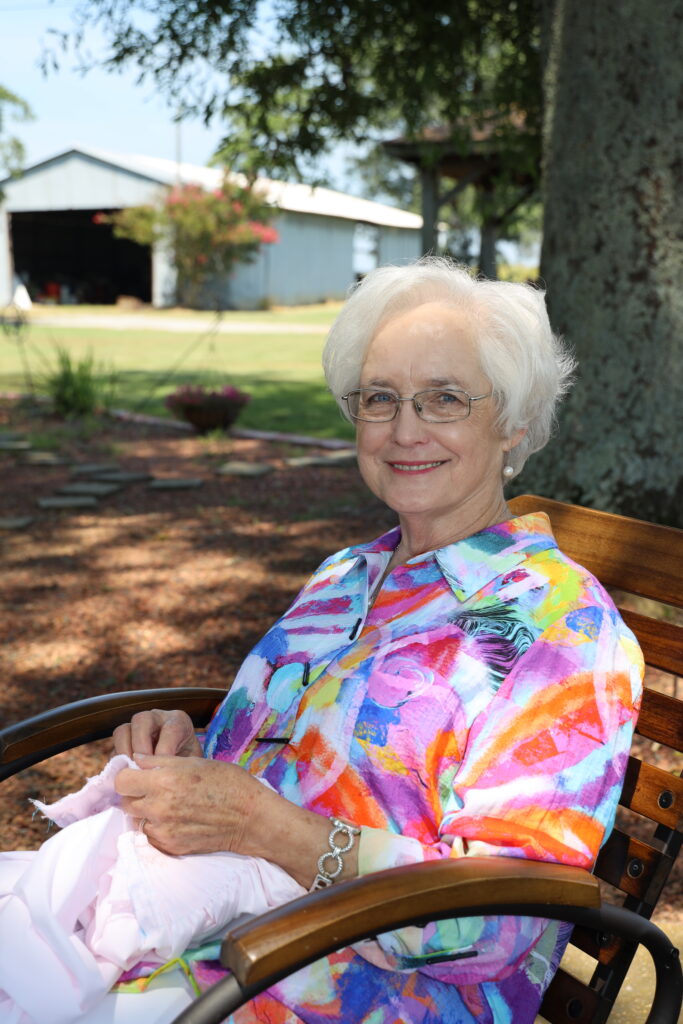Franklin County Seamstress Smocks Wearable Works of Art

By Marlee Jackson
After 40 years smocking one-of-a-kind wearable works of art, Carol Glass is embracing the adage that good things come in threes — like identical heirloom dresses for her triplet great-granddaughters.
“In 1983, I decided to learn to smock,” said the Franklin County seamstress, whose expertise also includes custom drapes. “I made dresses for both my daughters, which they wore in school pictures and were the talk of the school. They loved them. When granddaughters came along, I kind of went wild.”
Now 9-month-old Clara, Silvie and Maylee model Glass’s hand-sewn, pleated-to-perfection creations. These have included pale pink coming-home dresses and bonnets; Easter ensembles; and pink-and-green gowns for the Franklin County Watermelon Festival pageant.
Glass’s wiggling, giggling great-granddaughters swept their age category in the competition. Five pink, seed-flecked melons adorned each dress, showcasing Glass’s nimble needlework.
“Smocking is a dying art, and it is a God-given talent. Sewing is one of the things He gave me,” said Glass, who credits home economics teachers for supporting her sewing savvy. “A lot of people don’t enjoy it because they say it’s monotonous. I could smock all day and be happy.”

While hand-sewing is increasingly rare, pockets of smocking societies still promote the centuries-old art form. In central Alabama, Cathy Jones leads River Region Stitchers, a chapter of the Smocking Arts Guild of America (SAGA). The organization offers encouragement, instruction and community for long-time and beginning artists.
Jones said smocked fabric historically served a practical purpose. It was the precursor to elastic, lending stretch to garments.
Smocking has since evolved into a decorative art, as delicate stitches crisscross dresses, skirts, bubble rompers, overalls and household goods.
“In a SAGA class once, an instructor said, ‘Smocking is not a gift of clothing. It’s a gift of love,’” Jones said.

Three common stitches create those hand-sewn gifts. The cable stitch loops thread to make a chain-like pattern, while the baby wave and trellis zig and zag across fabric. (The baby wave is smaller).
Before making the first stitch, smockers invest hours selecting fabric, embroidery floss and accoutrement, like lace or ribbon. The materials can be costly, reaching hundreds of dollars for one tiny gown.
“To me, it’s rewarding,” Glass said. “It’s worth every minute and whatever money you put in it.”
To begin smocking, Glass runs cloth through a hand-cranked pleater. “Running threads” help gather the fabric and later guide decorative stitches, keeping the design even.
It’s important to select thread that contrasts the fabric and is easily seen while sewing, Glass said, like blue thread on pink fabric. The smocked work is often influenced by design plates, which give instructions for picture smocking or geometric designs.
Starting in the center of the gathered fabric, Glass weaves her needle left to right through pleats and the valleys between them. Once a half row is finished, she turns the fabric 180 degrees, again working left to right. Sewing half a row at a time reduces stress on the embroidery floss and prevents frayed, broken threads.
Once the design is complete, she removes the running threads and steams the fabric to set the pleats. Round-collared, Bishop-style gowns are pinned to a collar guide before being steamed.
Finishing touches are next. Think lace trim, hand-sewn roses, tiny pearl buttons and a dainty beauty pin to dress up the enclosure.
Those details are on display at Glass’s farmhouse outside Russellville. Portraits of her five grandchildren — modeling delicate outfits sewn by Grandmother — line the hallway.

Before becoming grandparents, Glass and her husband, Ronnie, raised their three children on a dairy. They still have beef cattle and hay and prioritize involvement in the Alabama Farmers Federation. For Glass, that includes chairing the local Women’s Leadership Committee and competing in statewide sewing contests. In 1999, her deft hand and eye for detail scored a win in the Heirloom Division of the Federation’s Cotton Fashion Show and Sewing Contest. Granddaughter Briana modeled the gown.
That gown and scores of hand-smocked treasures fill tubs at Glass’s house. They’re labors of love — and stitches in time.
“When you’re doing something like smocking, you can’t count time,” she said. “In fact, I don’t like using the word ‘time.’ I like to use ‘priorities’ because time hasn’t changed. Priorities change, whether it’s cooking, cleaning, working or playing with grandbabies. I don’t worry about the time I put in it. As long as I know it’s what my grands want, it’s going to be rewarding.”
